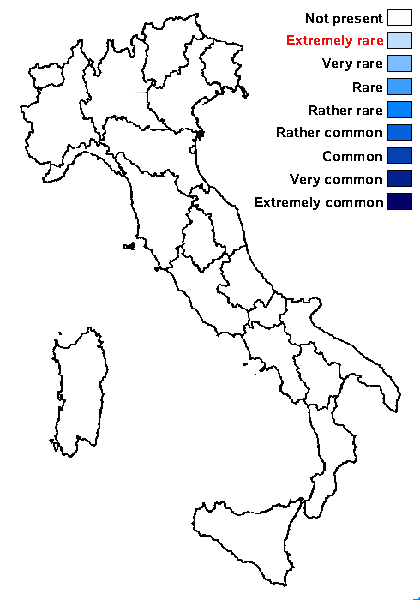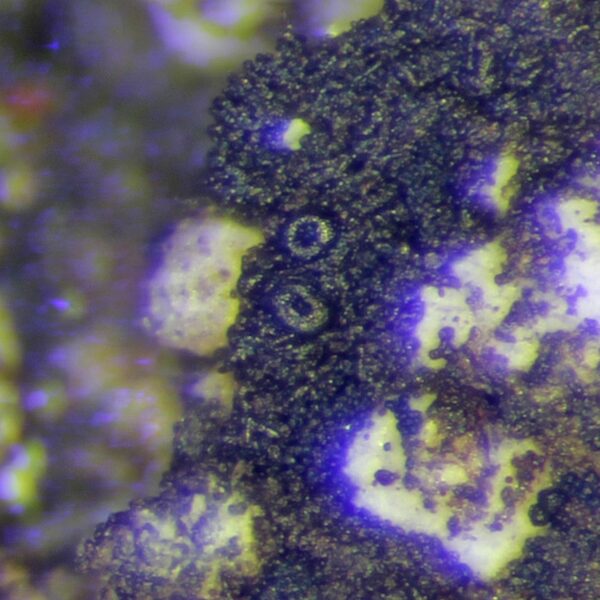Pyrenopsis grumulifera Nyl.
Lich. Scand.: 26, 1861
Synonyms: Pyrenopsis multispora Coppins
Distribution:
Description: Thallus crustose, episubstratic, brown-black to black when dry, dark reddish brown when wet, 50-200 µm thick, granular and effuse to cracked-areolate. Apothecia immersed, perithecioid, 0.1-0.2(-0.5) mm across, with a punctiform, blackish brown disc. Proper exciple poorly developed, c. 5 µm wide (thicker in upper part), pale brown to colourless in lower part, grey-brown in upper part; epithecium grey-brown; hymenium colourless, 70-80 µm high, I+ deep blue; paraphyses sparingly branched and anastomosing, 1-1.5 µm thick; hypothecium colourless, 40-50 µm high, I+ blue. Asci (8-)64-spored, broadly clavate, functionally unitunicate, with a strongly amyloid cap, 40-55 x 15-20 µm. Ascospores 1-celled, hyaline , oblong-ellipsoid, 4.5-7(-8) x 2-3 µm, Pycnidia unknown. Photobiont cyanobacterial, chroococcoid (Gloeocapsa), the cells single or paired, 10-15(-29) µm wide, surrounded by a reddish-violet gelatinous sheath. Spot tests: all negative. Chemistry: without lichen substances.
Note: on moist siliceous rocks (e.g. schists), widespread in NW Europe and apparently rare in the Alps, with a few records outside the Italian territory (Austria, Switzerland), but likely to be undercollected. To be looked for in Italy.
Growth form: Crustose
Substrata: rocks
Photobiont: cyanobacteria, coccaceous (e.g. Gloeocapsa)
Reproductive strategy: mainly sexual

Predictive model
Growth form: Crustose
Substrata: rocks
Photobiont: cyanobacteria, coccaceous (e.g. Gloeocapsa)
Reproductive strategy: mainly sexual

Predictive model
 Index Fungorum
Index Fungorum
 GBIF
GBIF


